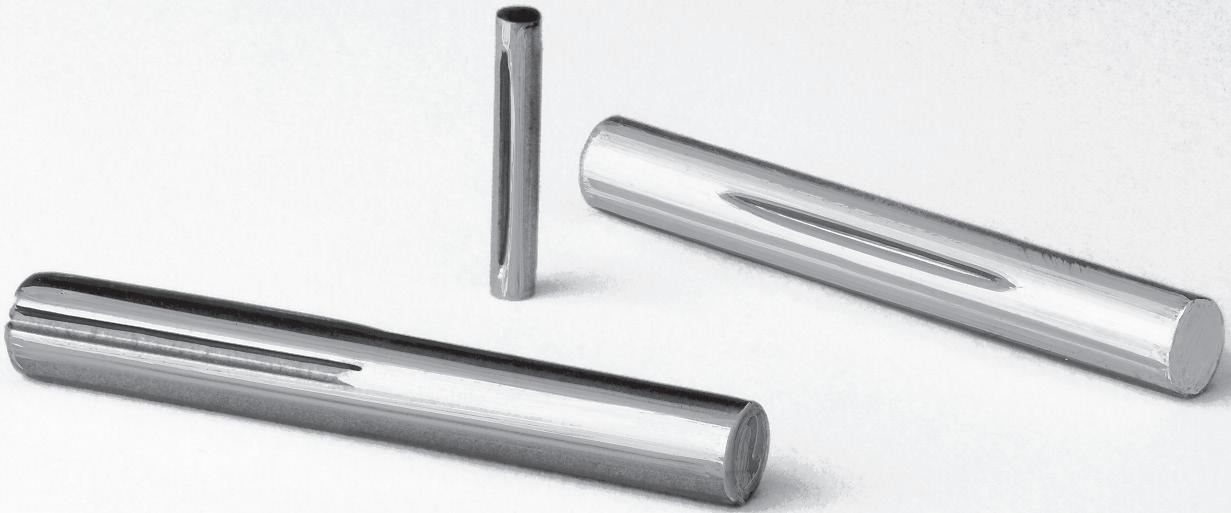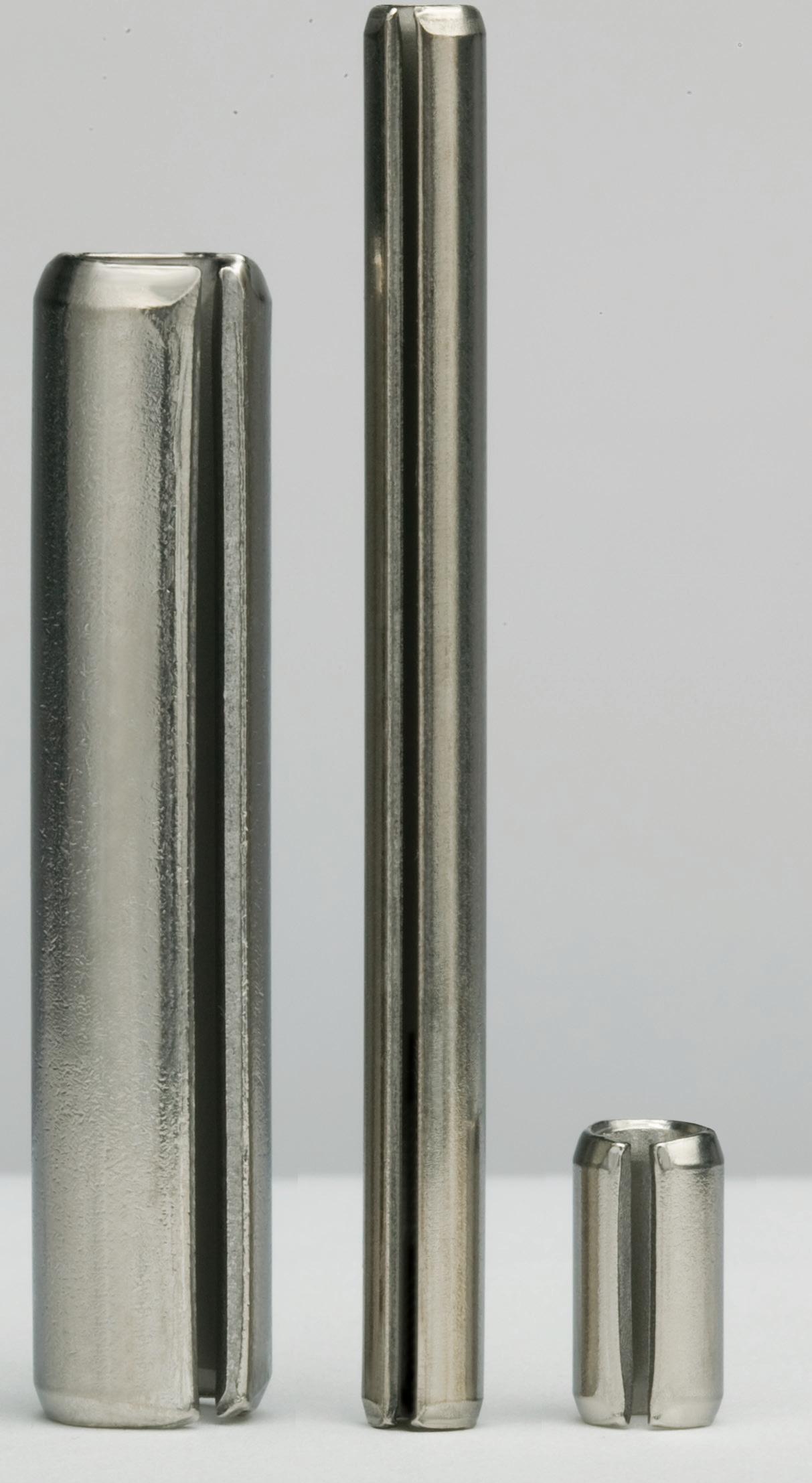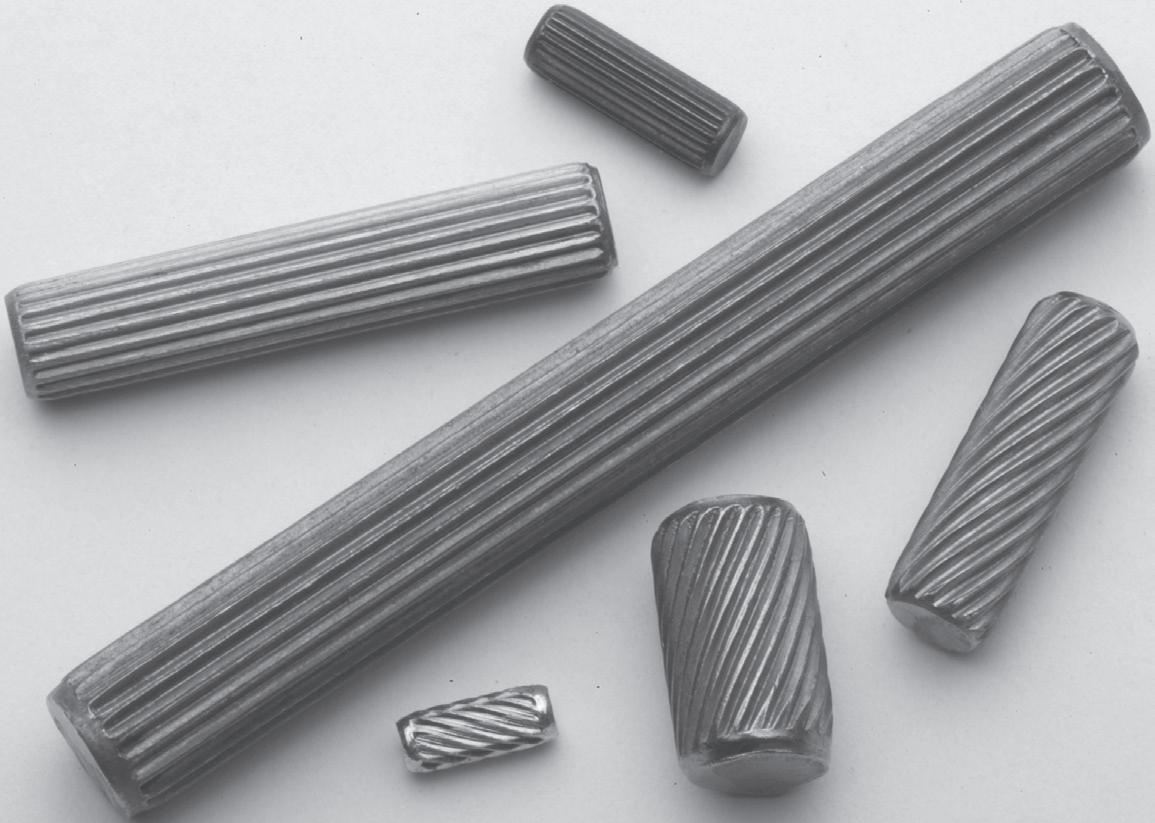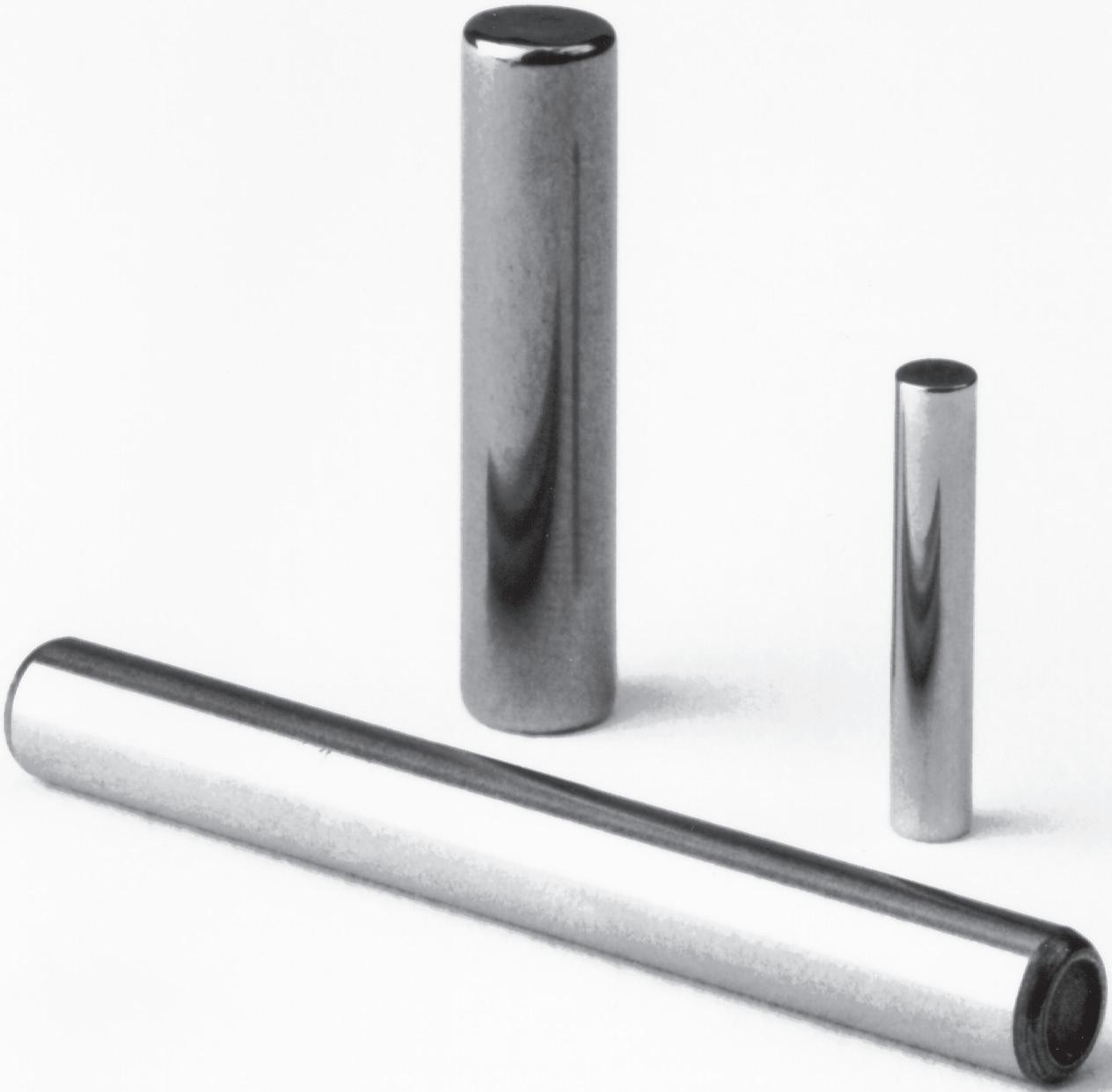
2 minute read
Fastening + Joining
The top reasons for automating instead of manually fastening include increased productivity and reduced costs. However, many fail to realize the fasteners’ impact on achieving these goals.
the fastener should naturally fall in one direction every time. A more complex method of orienting is necessary if this fails to occur.
Other methods include vision, laser, optical sensor, or a gaging bushing. However, using a symmetrical fastener makes it possible to save significantly on automation equipment.
Symmetrical fasteners have a continuous profile and are ideal for automating. They’re the easiest to feed because they require minimal orientation. Examples include straight (dowel), grooved, knurled, and slotted spring and coiled spring pins.
Generally, a machine will deliver the parts in a straight line to the feed tube. Once oriented, these parts are typically fed in a tube down to insertion equipment. Symmetrical fasteners also have some disadvantages. For example, the straight dowel pin depends on the host material for retention. As a result, reaming might be needed to achieve the necessary tight tolerances, and the hole preparation cost can be high (The exception is when these pins are used in plastic because the holes are molded.)
Grooved and knurled pins were developed to compensate for these concerns. The diameter across the grooves and knurls is designed to be larger than the hole. So, when a hardened grooved pin is used for strength, the host material deforms — but not to the same extent as a straight solid pin.
The knurled pin is also designed to cut into the host component. But neither the knurled nor the grooved pin requires the tight tolerances of the straight solid pins. Nevertheless,
Nearly anything can be automated, providing ample time and money. By adhering to a few basic guidelines, companies can increase productivity and avoid unnecessary tooling costs associated with complex automation equipment.
• Specify fasteners with a length-to-diameter ratio greater than 1:1
• Always ensure fasteners are clean and sorted
• Use symmetrical fasteners when possible
• Avoid fasteners that must be oriented for strength
• Choose fasteners that require low insertion forces
• Consider fasteners that allow for greater hole tolerances insertion forces are usually much higher for all types of solid pins, which can dramatically affect the cost of the automation equipment.
• If a headed fastener is necessary, design the fastener such that the di erential in the head and body diameter is between 20 to 30%.
Since solid pins require deformation of the host material for retention, there’s the possibility of cracked or damaged components during installation.
The spring pin was developed to compensate for the shortcomings of the solid pin. When a spring pin is driven into a hole, spring action allows it to compress within the diameter of the hole. Once installed, the radial force exerted by the pin against the hole wall provides self-retention.
Since spring pins require no material deformation for retention, the installation forces are lower, and there’s no host component damage. The spring pin can also absorb hole tolerances and minor hole mismatches.
There are two types of spring pins: slotted and coiled.
Slotted pins are manufactured with a gap to allow the pins to flex. Some manufacturing processes, such as the roll-forming method, result in uneven chamfers and non-square ends. The slotted pin offers an ideal way to reduce costs when manually installing the fastener, but it’s not recommended for automation.



The biggest problem when automating is the slotted pin’s “nonsquare” ends. When entering the escapement in the installation machine, the slotted pin tends to catch on the pin above it in the feed tube, preventing advancement. A gap can also cause the slotted pins to interlock and jam in the pin inserter.
Roll forming also induces the possibility of a bowed or bananashaped part. The pins tend to stretch at the slot and contract 180 degrees from the slot. The stresses in the heat treating/quenching process also tend to distort the pins. If the pin is not straight, it will not pass through the discharge










